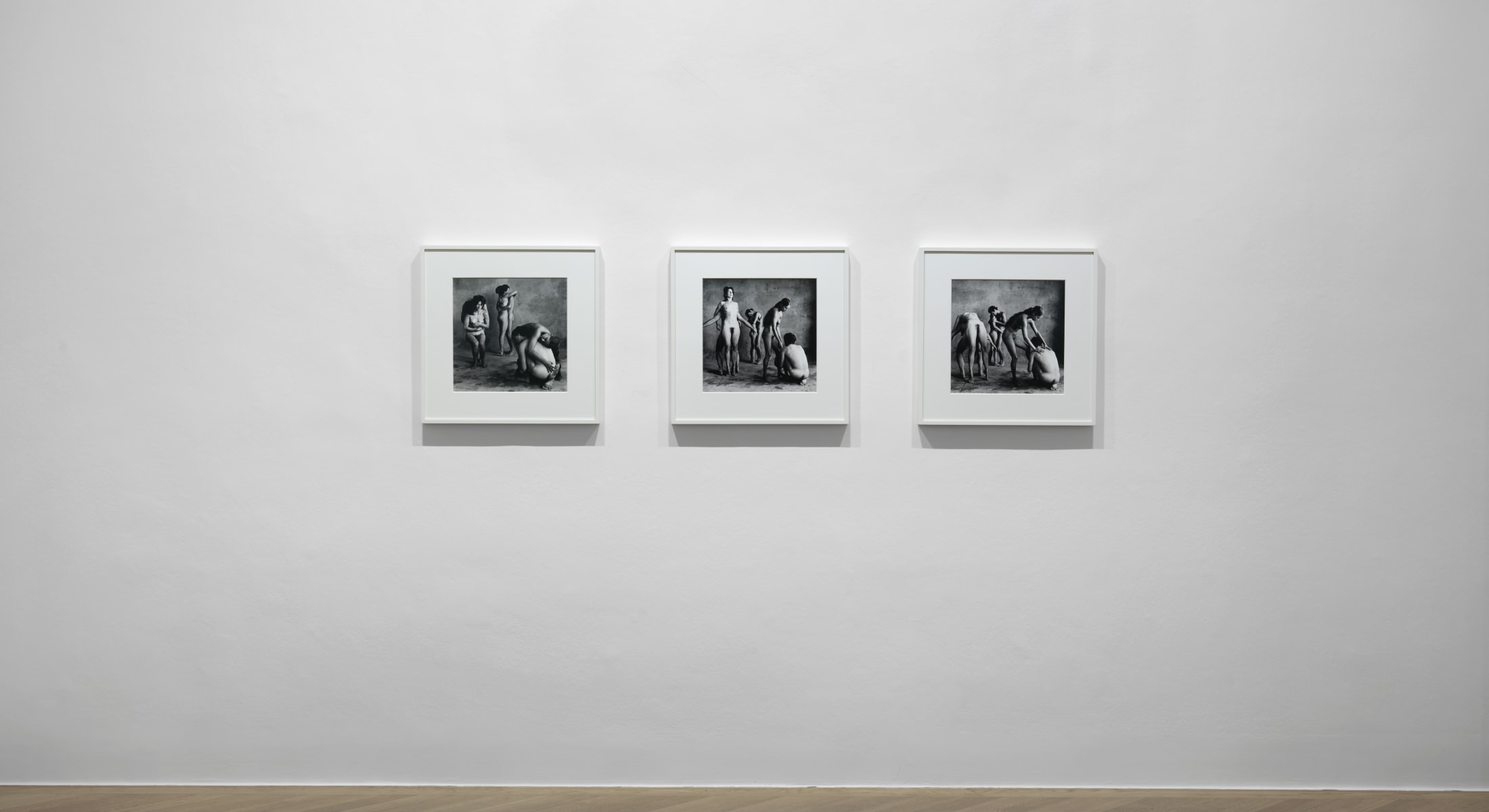
The summer of 1967 in San Francisco has become known as the ‘Summer of Love’. Young people converged on the city, drawn to its burgeoning counterculture that broke the taboos of American society, promoting community, altruism, mysticism and free love.
Irving Penn
The Bath (F) (Dancers' Workshop of San Francisco), 1967
Gelatin silver print, print made 1995
38.9 x 39.1 cm (15.31 x 15.37 in)
Ed. of 7

Fascinated by the movement, Irving Penn travelled to the Bay Area the following September to document its participants with a series of group portraits to be published in Look magazine. He wanted, as he termed it, to ‘look into the faces of these new San Francisco people through a camera in a daylight studio, against a simple background, away from their own daily circumstances.’
Irving Penn
The Bath (K) (Dancers' Workshop of San Francisco), 1967
Gelatin silver print, print made 1995
38.9 x 39.1 cm (15.31 x 15.37 in)
Ed. of 6

In the original performances of The Bath, the nude dancers bathed each other in fountains or using jugs and buckets of water. ‘The performance of the simple action,’ writes Anna Halprin in her notes on The Bath, ‘the natural action, objectifies what is really going on inside the performer’s self.’ Irving Penn omits the containers in his photographs, although fine droplets of water appear here and there on the dancers’ skin, and wet patches remain on the studio floor.
Irving Penn
The Bath (C) (Dancers' Workshop of San Francisco), 1967
Gelatin silver print, print made 1995
38.9 x 39.1 cm (15.31 x 15.39 in)
Ed. of 9

Irving Penn
The Bath (H) (Dancers' Workshop of San Francisco), 1967
Gelatin silver print, print made 1995
38.9 x 39.1 cm (15.31 x 15.39 in)
Ed. of 8
The idea of photographing by north light, the artist’s light, the idea is very romantic. It’s something that resonated with Penn. He had photographed by daylight as early as 1948. The simplicity, the purity, the piercing quality of daylight was a type of light that he enjoyed very much, and would always refer back to it or comment on it throughout his career. The sweetness of daylight. He was working by daylight up until the end of his career.
— Vasilios Zatse, Deputy Director of The Irving Penn Foundation
Coming in laterally from the window on the north side of the studio, the daylight wraps itself around the dancers’ bodies as they interlace. ‘The pictures are primarily of embraces,’ Irving Penn remarked upon rediscovering the photographs in 1995, ‘beautiful and touching. Here they are without clothes, there’s love, the gestures are tenderly erotic but certainly not pornographic.’
They’re portraits but they can also be viewed, if one looks carefully and objectively, one can say these are also still lifes.
— Vasilios Zatse, Deputy Director of The Irving Penn Foundation

Dance was a recurring theme throughout Irving Penn’s career. From his photographs of American ballet companies in 1946 to his 1999 series capturing the movements of dancer and choreographer Alexandra Beller, the artist maintained an interest in new and avant-garde forms of performance.
Irving Penn
The Bath (D) (Dancers' Workshop of San Francisco), 1967
Gelatin silver print, print made 1995
39.1 x 39.1 cm (15.39 x 15.39 in)
Ed. of 10


Irving Penn
Untitled, ca. 1987
Ink, watercolor, and dry pigment with gum arabic over platinum-palladium print on paper
59.7 x 48.9 cm (23.5 x 19.25 in)
Irving Penn
The Bath (G) (Dancers' Workshop of San Francisco), 1967
Gelatin silver print, print made 1995
38.6 x 37.8 cm (15.2 x 14.88 in)
Ed. of 11




















































































































































































